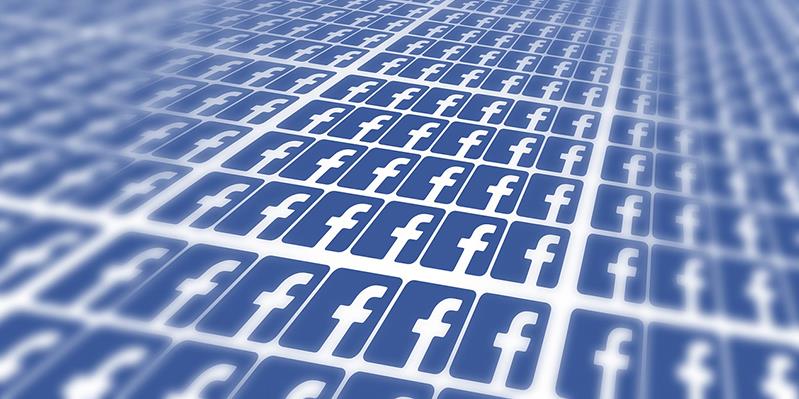Facebook’s impact on Digital Marketing
Facebook was once the place to catch up with old friends and keep up with current ones. After pushing the realms of Social Media, Facebook has been determined to make an impact on other areas of Digital Marketing.
Facebook can no longer be defined as just a Social Media network, it is now a place for businesses to connect with consumers. It is a marketplace where consumers can browse and buy products. Although businesses were already doing this through their Facebook pages for several years. Facebook has identified the opportunity and has expanded its services to cater to this specific need of businesses and their customers.
Here are a few ways Facebook has impacted Digital Marketing:
The way we shop
Facebook’s Marketplace is similar to Craigslist but there is more familiarity between the buyers and sellers. There is more transparency so buyers feel more secure when making a transaction in comparison to other websites like Craigslist and eBay.
Facebook re-launched Facebook Shop. It offers consumers the option to purchase products from Facebook itself. For users, it is easier to search on Facebook Shop as they won’t have to leave the platform and look elsewhere. The real benefit of Facebook Shop is the ease of tagging products to regular Facebook posts. According to 2015 statistics, a global user of Facebook spends at least 20 minutes on Facebook every day. If you follow the old saying in marketing “be where your customers are” then Facebook is the place to be.
Video is everything
A report released by Cisco suggests that 80% of the Internet traffic will be through video content by 2019. Recognizing that video content is the future, Facebook Video became an integral part of the platform. Content created by publishers gained a lot of prominence making Facebook a viable competitor to YouTube. Identifying that video was the easiest and most interactive way of creating buzz, Facebook launched Facebook Live to compete with YouTube Live.
Facebook Live was launched in 2015 and initially it looked like only celebrities and media companies would benefit from them. However, Facebook then made it public for everyone; now everyone is able to share live video content. Through Facebook Live you can broadcast live content from events page or a group page using your tablet or your cellphone.
Users can interact with you through comments or likes while you broadcast. It saves you the hassle of spending hours editing videos and each session can last 4 hours; the longer the session the higher the ranking on newsfeed.
Businesses and media outlets instantly jumped on to Facebook Live to avail the opportunity of broadcasting content and interacting with their audience directly. Dunkin Donuts was one of the first businesses to use Facebook Live to engage with their audiences. They had their first Live session back in February 2016 where they broadcasted behind-the-scene footage of their kitchen during Valentine’s Day. It featured their culinary team preparing a special Valentine’s Day cake made of Dunkin Donuts. They then asked their followers to share their proposal stories offering a prize of $10,000 for the best story. Around 13 minutes into the broadcasts, Dunkin Donuts had gathered 21,000 viewers and numerous inquiries of the next steps. Like Dunkin Donuts other companies such Tastemade, Grazia and Buzzfeed have held successful Facebook Live sessions and profited from them proving that Facebook Live will be a fundamental component of online promotion in the future. Amber van Moessner from Livestream claims that there are major benefits of broadcasting live; live video content effectively engages audiences, grows attendance and is cost-efficient.
Data Collection
Prior to Facebook, collecting information about consumer’s lifestyle and personalities was mainly done through interviews and focus groups. Since Facebook came into the picture, data about their consumers is easily available to companies. Companies can determine personalities, lifestyle, interests and preferences from all the information users provide on their Facebook profiles, including pages and posts they like and the videos they watch.
Content consumption
Earlier, people browsed the internet by entering keywords but Facebook collects content from different pages based on the user’s preferences and then presents it in their newsfeed. This information is customizable and personalized.
Targeting Audiences
Targeting the most relevant audience is always a challenge in marketing. Facebook lets businesses target customers based on age, income brackets, geographic location and interests. Although Google’s Adwords does this too, Facebook has a clearer understanding of interests since it is primarily used for entertainment purposes. Google is used for informational and entertainment purposes – you could be searching for something for a school project (not necessarily because it is of interest to you) and Google will store that information.
Related Posts
It’s no longer a hidden fact that social media platforms like Facebook affect the mental health of users.
LinkedIn is much more than a networking site - it's a proven platform for sales prospecting.
It’s certain the people you look up to the most in your professional life qualify as thought leaders.
If you don’t market your brand on TikTok, you’re missing boatloads of opportunities to engage and connect with your potential customers.
Facebook is one of the most popular social media platforms, and it is also among the oldest surviving ones.

















Comments
comments powered by Disqus